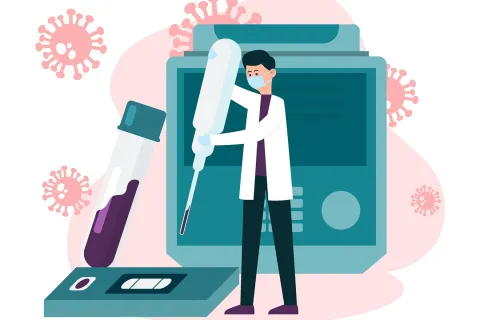As a life sciences company, you understand the immense effort and investment required to bring a new drug or medical device to market. From extensive research and development to rigorous clinical trials, every step of the process must be meticulously planned and executed to ensure compliance with strict regulatory standards. One often overlooked, yet crucial, component of this journey is the artwork associated with your clinical trial materials.
Artwork, in the context of clinical trials, encompasses all the visual elements, text, and graphics found on packaging, labels, and other supporting documents. This includes everything from investigational product labels and patient information leaflets to case report forms and shipping containers. While the scientific data and clinical outcomes are undoubtedly the primary focus, the artwork supporting these elements plays a vital role in the success and regulatory approval of your trial.
The Importance of Compliant Artwork in Clinical Trials
Regulatory bodies such as the FDA and EMA place immense importance on the accuracy and compliance of all materials associated with a clinical trial. Any errors or inconsistencies in the artwork can have serious consequences, including:
- Patient Safety Risks: Inaccurate dosage instructions, missing contraindications, or unclear labeling can directly impact patient safety and lead to adverse events.
- Regulatory Delays: Artwork that does not meet the stringent guidelines set forth by health authorities can result in lengthy delays in trial approvals and product launches.
- Costly Recalls: Errors discovered by post-approval can necessitate costly and time-consuming product recalls, damaging your company's reputation and bottom line.
To mitigate these risks, it is essential to have a robust and well-defined artwork management process in place throughout the clinical trial lifecycle. This includes the creation, review, approval, and version control of all visual assets to ensure they are compliant, accurate, and consistent.
Streamlining the Artwork Process for Clinical Trials
Developing an efficient artwork management process for your clinical trials involves several key considerations:
- Establish Clear Roles and Responsibilities: Identify all the stakeholders involved in the artwork process, including regulatory affairs, quality assurance, marketing, and design teams. Clearly define their roles and responsibilities to ensure seamless collaboration and accountability.
- Implement Standardized Workflows: Create standardized operating procedures (SOPs) and workflows for the artwork creation, review, and approval process. This will help minimize errors, streamline timelines, and maintain consistency across all your clinical trial materials.
- Leverage Digital Tools and Automation: Invest in digital artwork management solutions that can automate various tasks, such as version control, change tracking, and proof approvals. This will not only improve efficiency but also enhance the overall quality of your artwork.
- Ensure Regulatory Compliance: Closely monitor the evolving regulatory guidelines and requirements for clinical trial artwork in your target markets. Collaborate with regulatory experts to ensure your artwork is compliant and can withstand scrutiny during the approval process.
- Prioritize Quality Control: Implement robust quality control measures, such as multiple rounds of proofreading, color and layout validation, and cross-checks against approved artwork templates. This will help identify and rectify any errors before your materials are finalized.
- Foster Collaboration and Communication: Encourage open communication and collaboration among all the teams involved in the artwork process. This will facilitate the timely exchange of feedback, the resolution of issues, and the maintenance of version control.
By addressing these key elements, you can develop a streamlined and efficient artwork management process that supports the success of your clinical trials and increases the likelihood of regulatory approval.
The Benefits of a Robust Artwork Management Process
Investing in a well-designed artwork management process for your clinical trials can bring about numerous benefits, including:
- Improved Patient Safety: Accurate and compliant artwork ensures that patients receive unambiguous information, reducing the risk of medication errors or adverse events.
- Faster Regulatory Approvals: Artwork that meets or exceeds regulatory standards can significantly expedite the review and approval process, allowing you to bring your product to market more quickly.
- Reduced Costs and Waste: Minimizing errors and the need for costly recalls or rework can save your organization substantial time and resources.
- Enhanced Brand Reputation: Consistently high-quality and compliant artwork demonstrates your company's commitment to patient safety and regulatory excellence, strengthening your brand image and credibility.
- Streamlined Global Expansion: A well-defined artwork management process can facilitate the seamless adaptation of your clinical trial materials for different markets and languages, supporting your international growth strategy.
As a leading provider of regulatory services to the life sciences industry, Freyr understands the critical importance of artwork management in the success of clinical trials and regulatory approvals. Our team of experts can work with you to develop and implement a robust, technology-driven artwork management process tailored to your specific needs. By partnering with Freyr, you can ensure that your clinical trial artwork is a strategic asset that supports your overall business objectives and regulatory compliance.
Author: Nirupama Parate










